Table of Contents
Toggleया देवी सर्वभूतेषु शक्ति-रूपेण संस्थिता।
नमस्तस्यै नमस्तस्यै नमस्तस्यै नमो नमः॥
i.e.,
“Salutations again and again to the Divine Goddess who dwells in all beings in the
form of power (Shakti).”
Hello friends.
Welcome to our Website. Today we will discuss a topic i.e., Navratri: A Vibrant Nine-Day Festival of Devotion, Dance, and Divine Power. Navratri, meaning “nine nights” in Sanskrit (“nava” for nine, “ratri” for nights), is one of India’s most colorful and spiritually significant Hindu festivals. Celebrated with devotion, music, and dance, it honors Goddess Durga’s triumph over evil and celebrates the divine feminine energy, or Shakti.
Observed twice a year—Chaitra Navratri in spring and Sharad Navratri in autumn (the more popular one, around September – October) – Navratri in 2025 will begin around September 22 for Sharad Navratri. This nine-day festival is a time of fasting, prayer, and joyous celebrations, uniting families and communities.
In this detailed guide, we’ll explore why Navratri lasts nine days, its history, significance, and how it’s celebrated across India, all in simple language with a mix of English for clarity.
What is Navratri? A Joyful Introduction
- Navratri is a vibrant Hindu festival that spans nine nights and ten days, dedicated to worshipping Goddess Durga in her various forms. It’s a time when homes, temples, and streets come alive with prayers, dances, and delicious foods. The festival celebrates the victory of good over evil and the power of Shakti, making it a deeply spiritual and festive occasion.
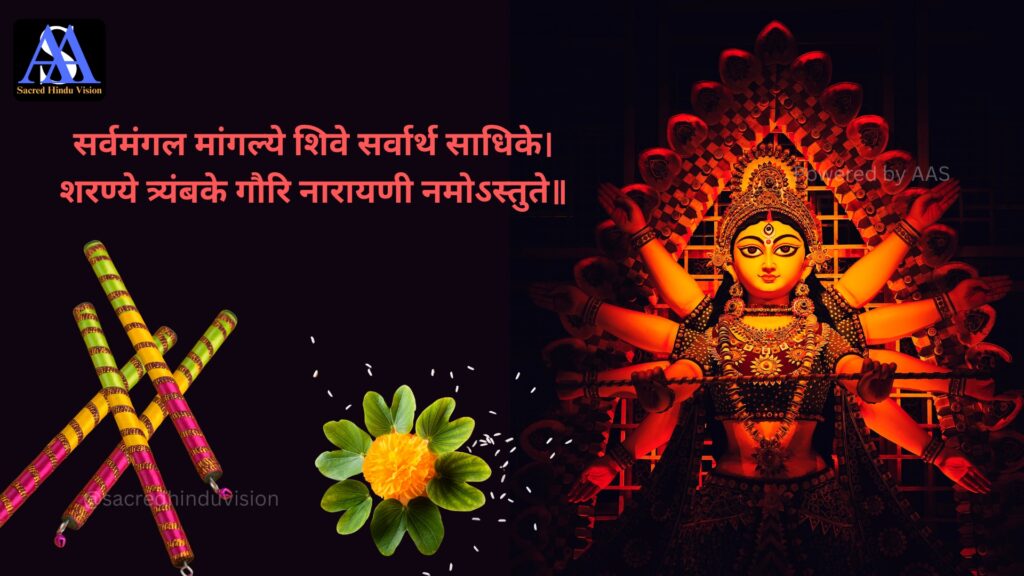
The Nine Days of Navratri and Their Colors
- Each of the nine days is dedicated to a different form of Goddess Durga, known as Navadurga. Devotees often wear specific colors each day to align with the goddess’s energy:
Day 1: Shailaputri – Red for energy and strength.
Day 2: Brahmacharini – White for purity and penance.
Day 3: Chandraghanta – Yellow for peace and courage.
Day 4: Kushmanda – Green for growth and vitality.
Day 5: Skandamata – Grey for nurturing and protection.
Day 6: Katyayani – Orange for bravery.
Day 7: Kalaratri – Blue for fierce power.
Day 8: Mahagauri – Pink for serenity and forgiveness.
Day 9: Siddhidatri – Purple for wisdom and spiritual power.
These colors add vibrancy to the festival, with people dressing up and decorating their homes accordingly.
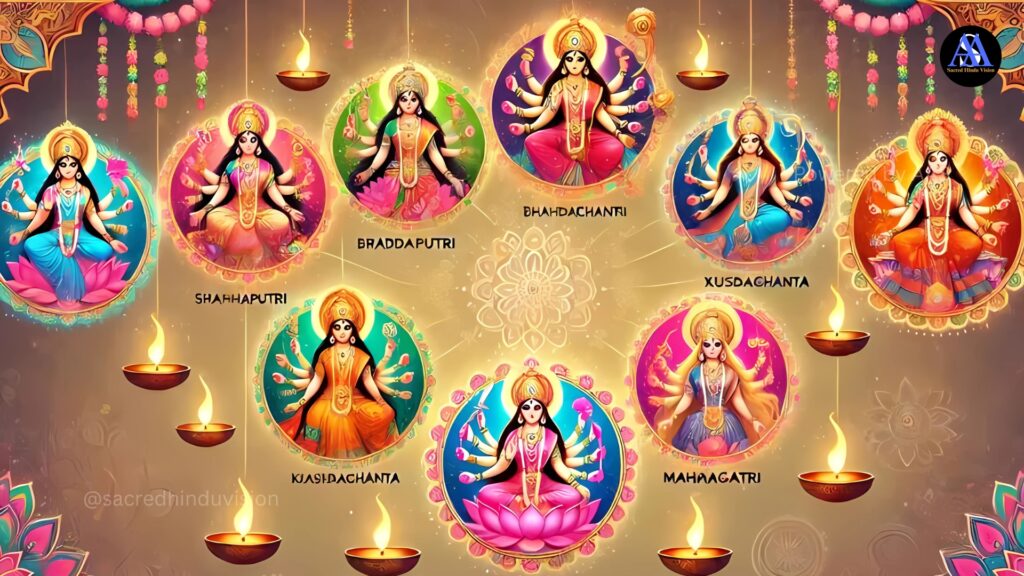
Fasting and Feasts in Navratri
- Fasting, or vrat, is a key part of Navratri for many. Devotees avoid grains, onion, garlic, and non-vegetarian food, opting for light meals like fruits, milk, sabudana khichdi, or kuttu’s puri. Some fast completely, drinking only water. The fast ends on the tenth day, Dussehra, with feasts of sweets like jalebi and savory snacks like Chana masala. It’s a balance of discipline and indulgence.
The Fascinating History of Navratri Festival
- Navratri’s roots lie in ancient Hindu mythology, with stories that highlight courage, faith, and the triumph of good. These tales explain why the festival is celebrated and give it deep meaning.
The Epic Battle with Mahishasura
- According to the Devi Mahatmya, a demon named Mahishasura gained a boon from Lord Brahma that no man could kill him. Emboldened, he wreaked havoc on earth and the heavens, defeating even the gods. To stop him, the gods—Brahma, Vishnu, and Shiva—combined their powers to create Goddess Durga, a fierce and beautiful warrior. She fought Mahishasura for nine days and nights, each day overcoming his cunning and strength. On the tenth day, she slayed him, restoring peace. This nine-day battle is the heart of Navratri, with the tenth day, Vijayadashami, celebrating her victory.
Lord Rama and Ravana’s Defeat
- Another story ties Navratri to the Ramayana. Before battling the demon king Ravana, Lord Rama worshipped Goddess Durga for nine days to gain her blessings and strength. On the tenth day, he defeated Ravana, symbolizing the victory of righteousness. This is why Dussehra, the day after Navratri, often includes burning effigies of Ravana in many parts of India.
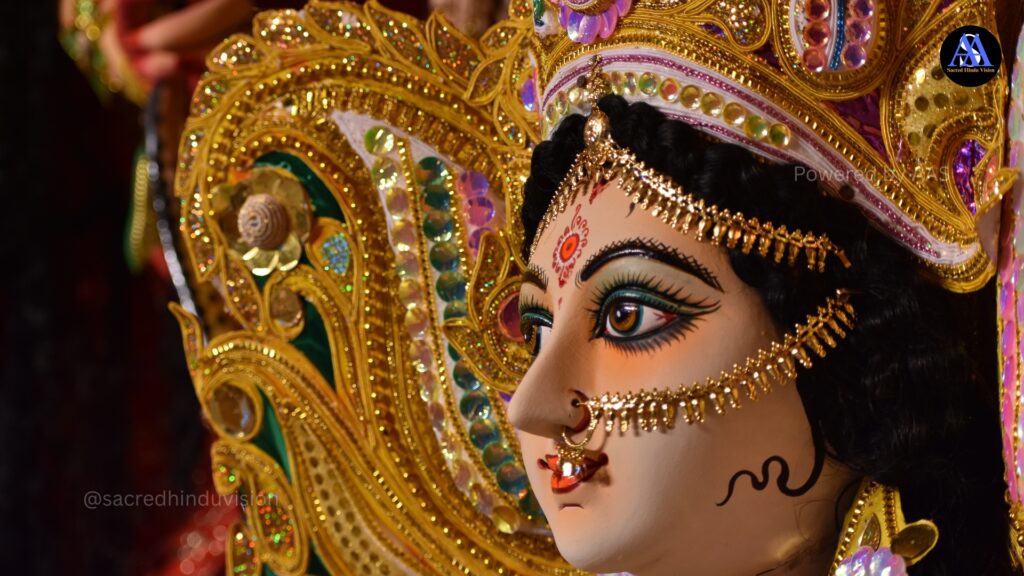
Ancient Roots
- The worship of the divine feminine dates back thousands of years in India, with references in ancient texts like the Vedas and Puranas. Navratri’s structure evolved over time, blending mythology with seasonal and spiritual practices, making it a festival of both faith and festivity.
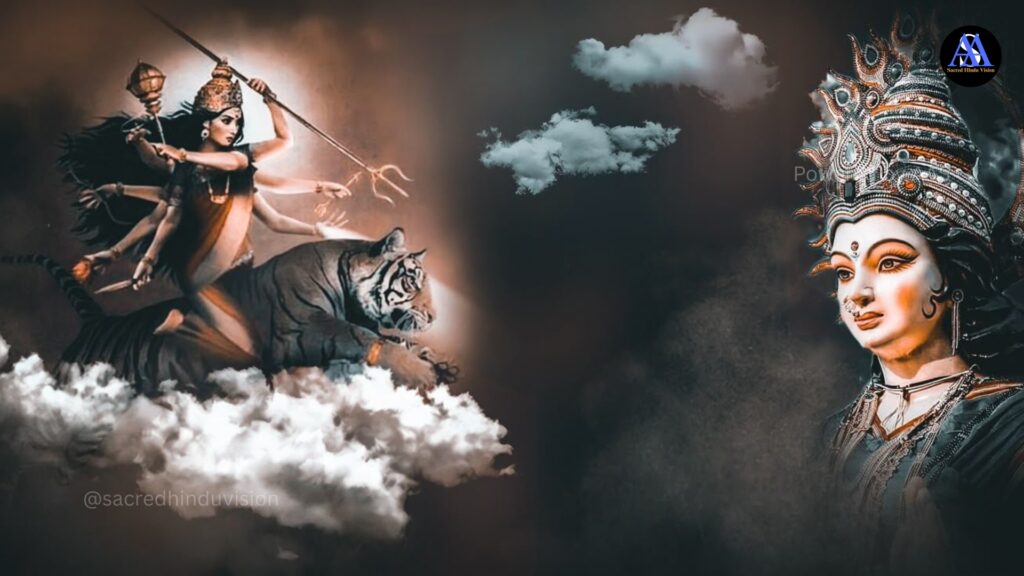
Why Nine Days? The Deeper Reason for Navratri’s Duration
- The nine-day duration of Navratri is not random—it’s steeped in mythology, spirituality, and cosmic significance. Let’s break down why Navratri lasts exactly nine days.
Mythological Reason: Durga’s Nine-Day Battle
- As mentioned, Goddess Durga’s battle with Mahishasura lasted nine days and nights. Each day represented a phase of her struggle, from facing his army to countering his shape-shifting tricks. The nine days of Navratri mirror this epic fight, with each day’s worship honoring her growing strength and ultimate triumph. The tenth day, Vijayadashami, marks the victory, making the nine-day structure a tribute to her perseverance.
Spiritual Significance of Navratri: Nine Forms of Durga
Navratri is dedicated to the nine forms of Goddess Durga, called Navadurga. Each day focuses on one form, allowing devotees to connect with different aspects of her power:
- Shailaputri: Strength and grounding.
- Brahmacharini: Devotion and discipline.
- Chandraghanta: Courage and peace.
- Kushmanda: Creation and energy.
- Skandamata: Motherly love and protection.
- Katyayani: Warrior spirit.
- Kalaratri: Destruction of fear and evil.
- Mahagauri: Purity and forgiveness.
- Siddhidatri: Wisdom and spiritual fulfillment.
Worshipping these forms over nine days ensures a complete spiritual journey, balancing strength, devotion, and knowledge.
Navratri – The Three Goddesses: A Three – Part Structure
Navratri is divided into three sets of three days, each dedicated to a major goddess, totaling nine days:
- Days 1–3: Goddess Durga – Focus on destroying negativity, bad habits, and obstacles. It’s about inner strength and cleansing.
- Days 4–6: Goddess Lakshmi – Prayers for wealth, prosperity, and abundance in material and emotional life.
- Days 7–9: Goddess Saraswati – Seeking wisdom, creativity, and spiritual growth.
This structure ensures devotees address all aspects of life – strength, wealth, and knowledge – over nine days, creating a holistic spiritual experience.
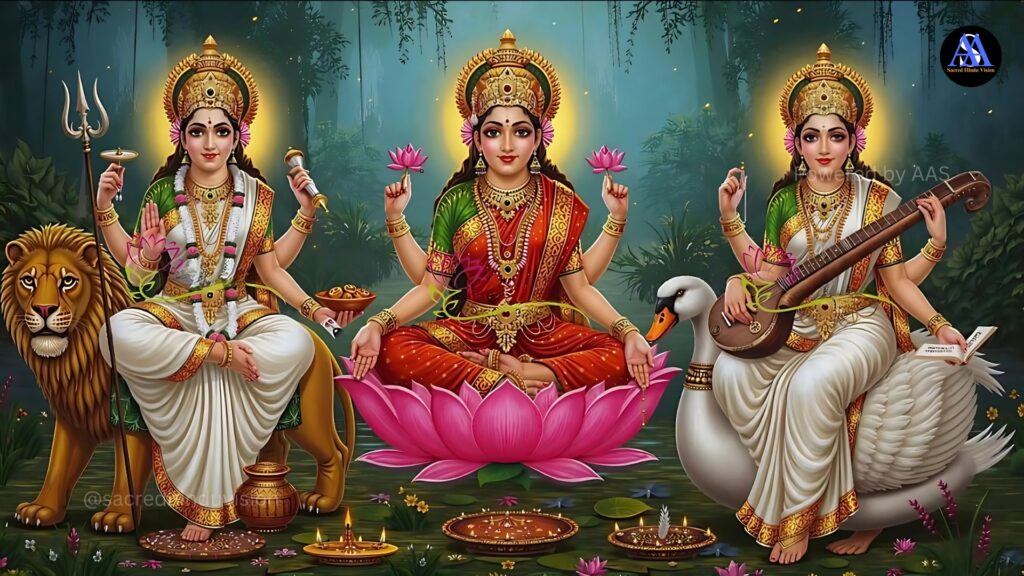
Navratri – Astrological and Seasonal Connection
- The number nine is sacred in Hinduism, linked to the Navagrahas (nine celestial bodies) that influence human life. Navratri’s rituals, like chanting mantras and fasting, are believed to balance these planetary energies. Additionally, Navratri aligns with seasonal changes – spring (Chaitra) and autumn (Sharad). In autumn 2025, around September 22, it marks the shift from monsoon to cooler months. The nine days allow the body and mind to detox and adapt to the new season through fasting and prayer.
Navratri – Cultural and Practical Reasons
- Nine days strike a balance—long enough for deep devotion, community events like Garba or Durga Puja, and spiritual growth, but not so long that it disrupts daily life. Ancient traditions in texts like the Puranas set this duration for goddess worship, making it a standard for festivals like Navratri. It’s a time for families to bond, communities to celebrate, and individuals to reflect

Why Do We Celebrate Navratri? It’s Core Significance
- Navratri is more than just a festival—it’s a celebration of life’s deeper values, teaching lessons through stories and rituals.
Victory of Good over Evil
- At its core, Navratri celebrates the triumph of good over evil, as seen in Durga’s victory over Mahishasura and Rama’s defeat of Ravana. It’s a reminder that truth and righteousness always prevail, giving hope and courage in challenging times.
Honoring Shakti – The Divine Feminine
- Navratri worships Shakti, the feminine energy that powers the universe. Through Durga (strength), Lakshmi (prosperity), and Saraswati (wisdom), the festival highlights the importance of balance in life. It’s a time to respect and embrace feminine power in all its forms.
Physical and Spiritual Renewal
- Fasting during Navratri detoxes the body, while prayers and meditation cleanse the mind. It’s like hitting a reset button, preparing devotees for the new season with clarity and positivity. The nine days encourage self-discipline and spiritual growth.

How Navratri is celebrated across India?
- India’s diversity shines during Navratri, with each state adding its unique flavor to the celebrations. From dances to doll displays, here’s how different regions mark the festival.
Gujarat: Garba and Dandiya Extravaganza
- Gujarat is famous for its electrifying Garba and Dandiya Raas dances. Garba involves circling around a lamp-lit pot (Garba), while Dandiya uses colorful sticks that clack in rhythm. People dress in vibrant Chania choli or kurta-pajama and dance in huge grounds until late at night. Snacks like thepla, fafda, and jalebi keep the energy high. Temples host pujas, and the vibe is pure celebration.
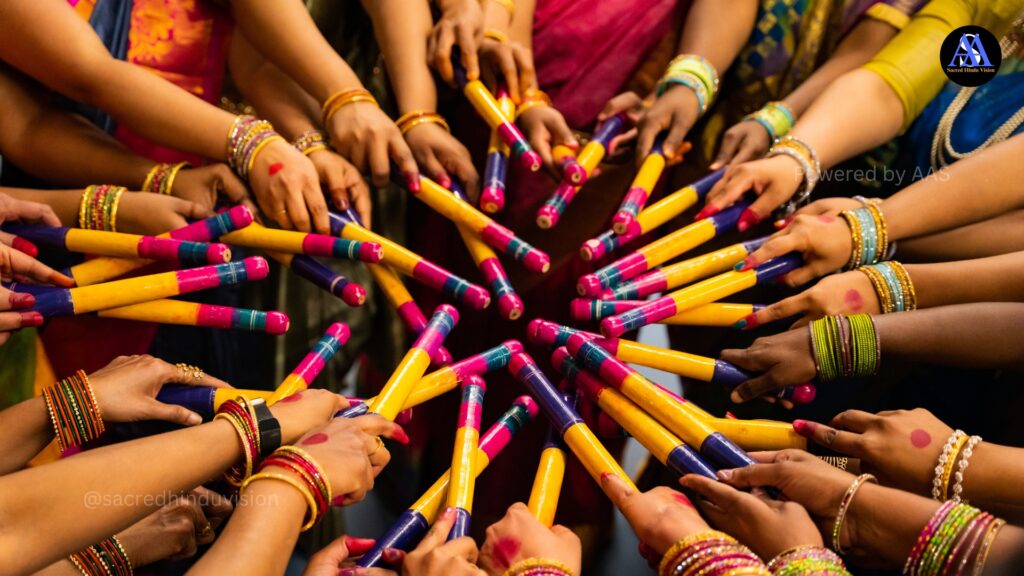
West Bengal: Grand Durga Puja
- In Bengal, Navratri is synonymous with Durga Puja, especially from Day 6 to 10. Massive pandals (temporary temples) showcase stunning idols of Durga slaying Mahishasura. Families visit pandals, offer prayers, and enjoy sweets like Sandesh and Rosogolla. The festival ends with Visarjan, where idols are immersed in rivers amid drumbeats (dhak) and dances. It’s a blend of art, devotion, and community spirit.
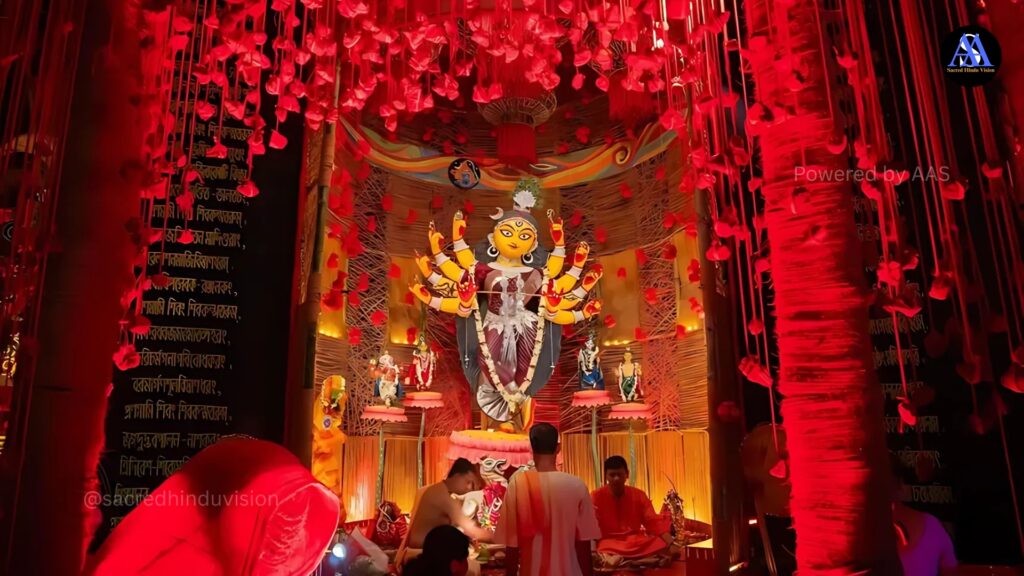
North India (Uttar Pradesh, Delhi): Ramlila and Kanya Puja
- In states like Uttar Pradesh and Delhi, Navratri focuses on both Durga and Lord Rama. Ramlila plays reenact the Ramayana, culminating in burning giant Ravana effigies on Dussehra. On Ashtami or Navami, Kanya Puja honors nine young girls as forms of Durga, offering them halwa, puri, and gifts. Jagrans (all-night devotional singing) keep the festive spirit alive.
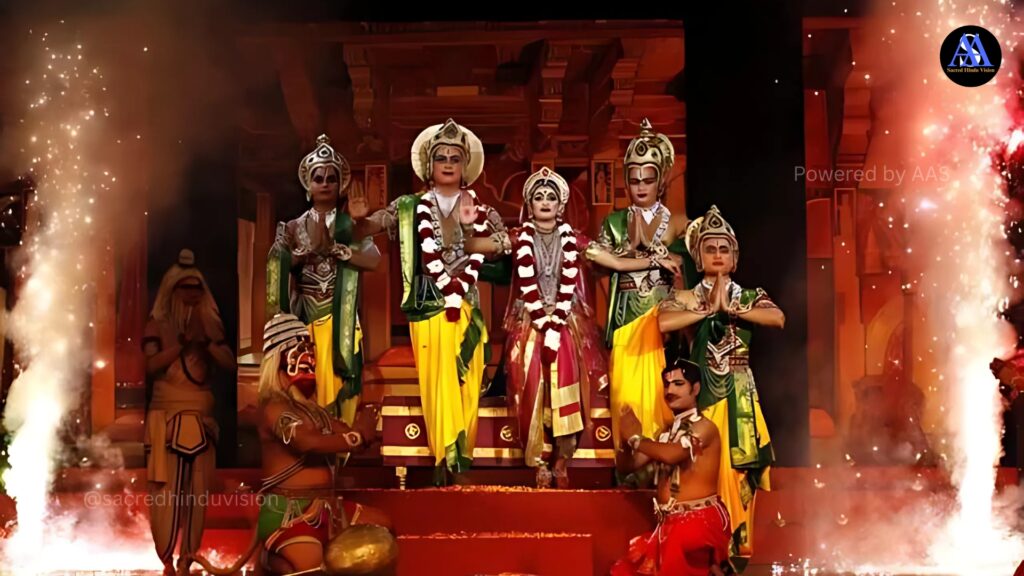
South India (Tamil Nadu, Karnataka): Golu and Processions
- In Tamil Nadu, families set up Golu – steps of dolls depicting gods, animals, and daily life scenes. They sing bhajans and share sundal (spiced chickpeas). In Karnataka, Mysore Dasara is iconic, with a grand procession featuring Goddess Chamundeshwari on a golden elephant. Yakshagana dance-dramas and Ayudha Puja (worshipping tools and books) add to the festivities.
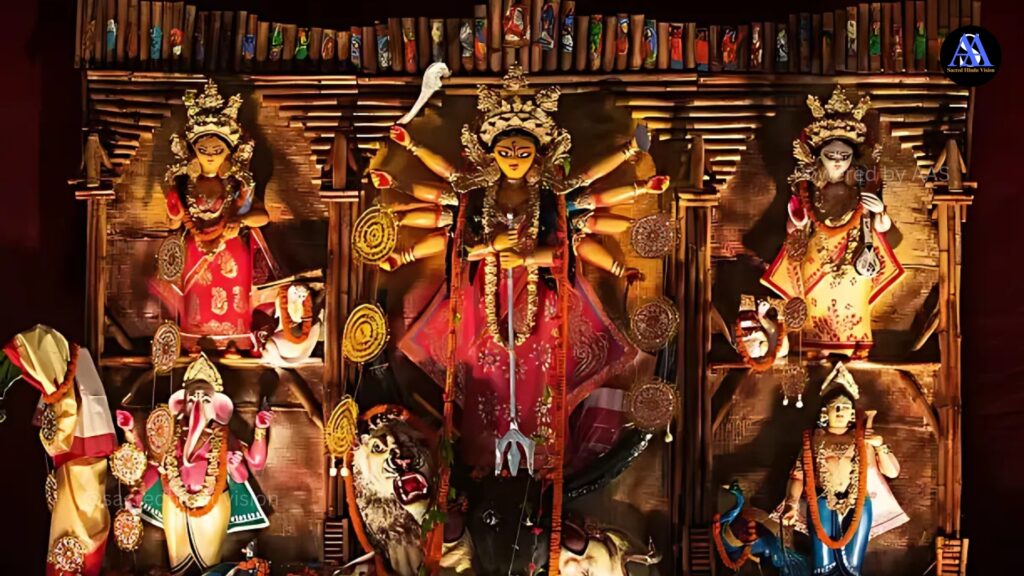
Other Regions: Punjab, Andhra Pradesh, and More
- In Punjab, Navratri includes Kanjak (worshipping young girls) and lively jagrans. In Andhra Pradesh, Bathukamma sees women create stunning flower towers, dance around them, and float them in lakes, celebrating nature and femininity. Each region adds its unique touch, making Navratri a national celebration.

Tips to Make Your Navratri Special at Home
- You don’t need to travel to experience Navratri’s magic – bring it home with these simple ideas.
Daily Rituals for Beginners
- Start with Ghatasthapana on Day 1, planting barley seeds in a clay pot for good luck. Light a Diya, chant Durga mantras, and offer fruits or flowers. Fast if you can, or eat sattvic foods like fruits and buckwheat. Dress in the day’s theme color to feel connected.
- Family and Community Fun: Host a small Garba or Dandiya night at home with family or friends. Join online pujas if you can’t visit temples. On Ashtami or Navami, do Kanya Puja by inviting young girls, feeding them, and seeking their blessings. End Navratri with a Dussehra feast of sweets and storytelling.
Eco – Friendly Celebrations
- Go green with clay idols, LED lights, and reusable decor. Avoid plastic and chemical colors during Visarjan. Share your Navratri moments on social media with hashtags like #Navratri2025 or #JaiMataDi to inspire others.

Impact of Navratri on People Nowadays
- Navratri, with its vibrant traditions and spiritual depth, continues to have a profound impact on people in modern times, influencing their spiritual, social, cultural, and even economic lives. Below are the key ways Navratri affects individuals and communities today:
- Spiritual and Personal Growth: Renewed Faith and Discipline: Navratri encourages fasting, prayer, and meditation, fostering self-discipline and spiritual cleansing. Many people use this time to reflect, detoxify their bodies through fasting, and reconnect with their faith, finding inner peace and clarity in a fast-paced world.
- Empowerment through Shakti: The worship of Goddess Durga and her forms inspires confidence, particularly among women, by celebrating feminine strength and resilience. This resonates in modern contexts, promoting gender empowerment and self-worth.
- Mental Well – Being: The rituals, mantras, and community activities during Navratri provide a sense of purpose and calm, helping people manage stress and anxiety. The festival’s focus on positivity and good triumphing over evil uplifts spirits.
Social and Community Bonding
- Cultural Unity: Navratri brings people together through events like Garba, Dandiya, Durga Puja pandals, and Ramlila performances. These gatherings strengthen community ties, especially in urban areas where people crave connection.
- Family Traditions: Families come together to perform rituals like Ghatasthapana, Kanya Puja, or Golu displays, passing down traditions to younger generations and reinforcing familial bonds.
- Inclusivity: Navratri transcends regional and social boundaries, with diverse celebrations across India and the Indian diaspora. Non-Hindus often participate in cultural events like Garba or pandals visits, promoting inclusivity
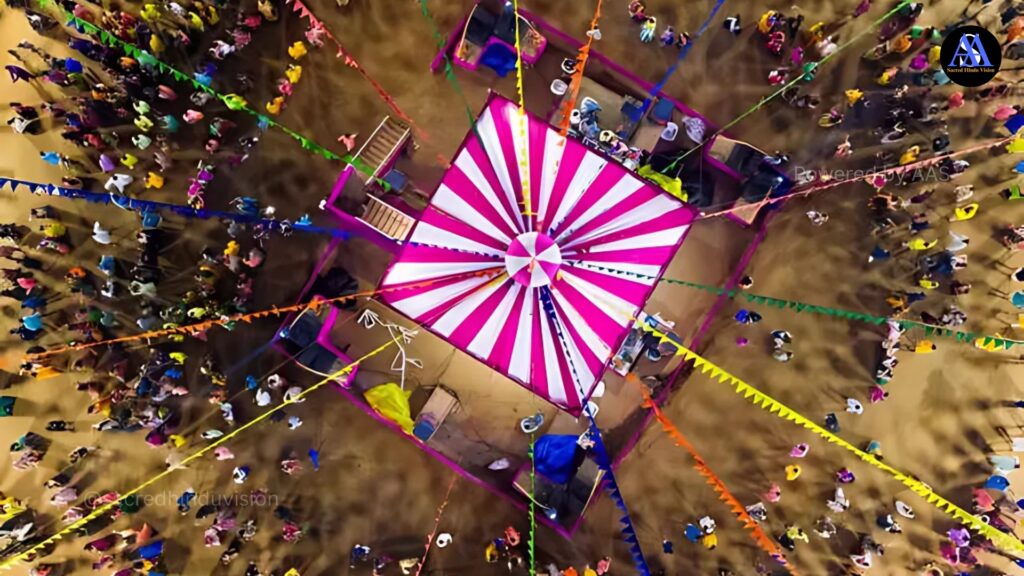
Cultural Preservation and Expression
- Revival of Traditions: Navratri keeps traditional arts alive, such as Garba and Dandiya dances, Yakshagana, and Ramlila. Young people, especially in urban areas, engage with these art forms, blending them with modern music and choreography.
- Global Reach: The Indian diaspora celebrates Navratri worldwide, from the US to the UK, spreading Indian culture. Events like Garba nights in cities like London or New York attract diverse crowds, showcasing cultural pride.
- Fashion and Creativity: Navratri’s color-coded days and traditional outfits (like Chania choli or kurta-pajama) inspire fashion trends. People express creativity through outfits, home decor, and Golu arrangements, boosting local artisans and designers.
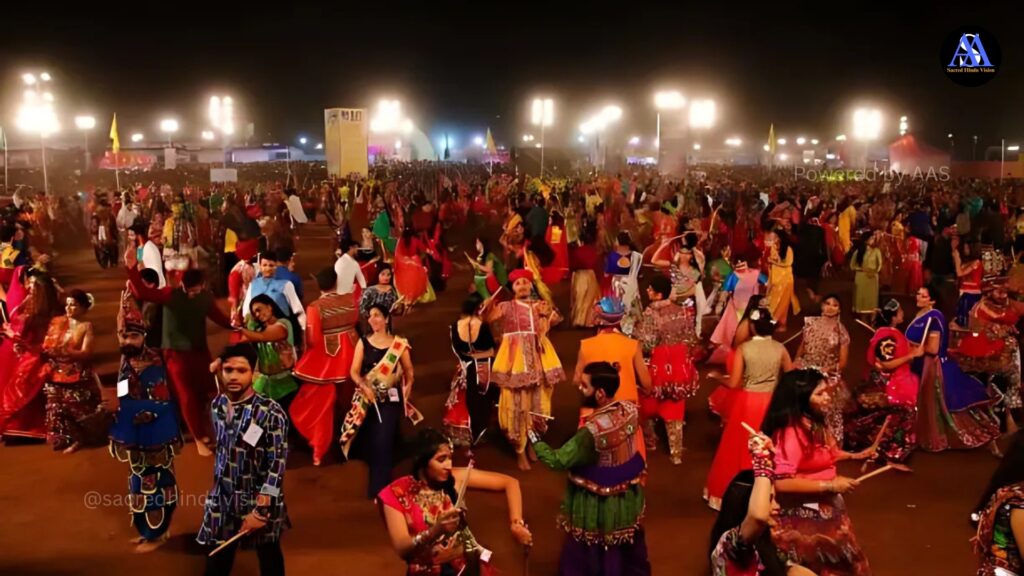
Economic Impact of Navratri
- Boost to Local Economies: Navratri drives demand for clothes, jewelry, sweets, and puja items, benefiting small businesses, artisans, and markets. Durga Puja pandals and Garba events create jobs for decorators, musicians, and caterers.
- Event Industry Growth: Large-scale Garba and Dandiya events, especially in cities like Ahmedabad, Mumbai, and Delhi, are ticketed, attracting sponsors and boosting the event management industry.
- Online Engagement: E-commerce platforms see a surge in sales of festive attire, decor, and puja kits. Social media campaigns with hashtags like #Navratri2025 amplify brand visibility, with influencers promoting Navratri-themed products.
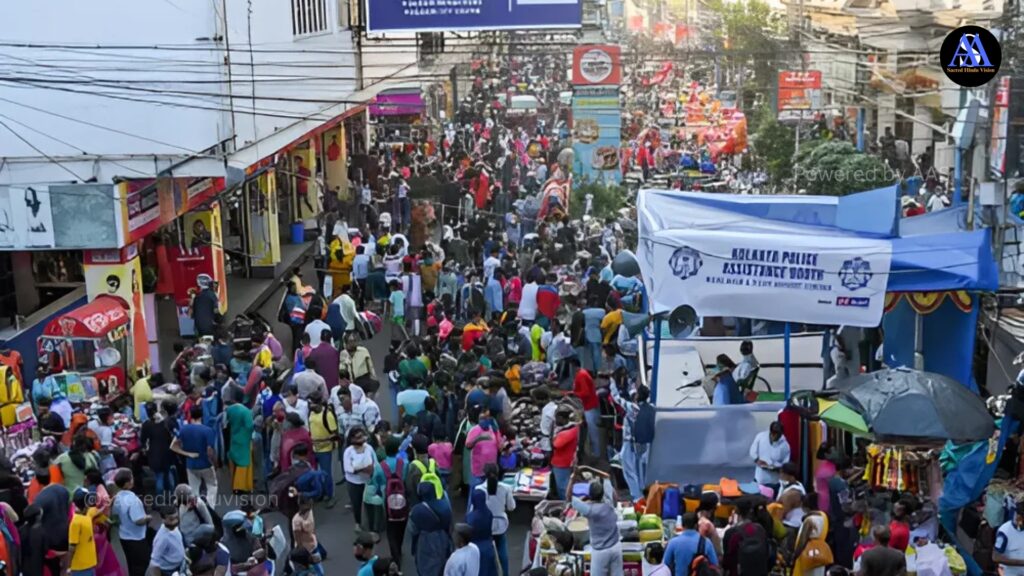
Modern Challenges and Adaptations
- Eco – Conscious Celebrations: Growing environmental awareness has led to eco-friendly Navratri practices, like using clay idols, LED lights, and natural colors for Visarjan, reflecting a modern shift toward sustainability.
- Digital Participation: With busy lifestyles, many join virtual pujas or watch live-streamed Garba events, making Navratri accessible globally. Apps offer Navratri recipes, mantras, and fasting guides, blending tradition with technology.
- Balancing Modernity and Tradition: Younger generations adapt Navratri to fit urban lifestyles, such as hosting smaller Garba nights or combining fasting with vegan diets, ensuring the festival remains relevant
Emotional and Psychological Impact
- Sense of Belonging: For the Indian diaspora and urban dwellers, Navratri fosters a sense of cultural identity and belonging, countering feelings of alienation in globalized settings.
- Festive Joy: The music, dance, and vibrant atmosphere provide a break from routine, uplifting moods and creating joyful memories, especially for children and young adults.
Summary of Navratri
Navratri, meaning “nine nights,” is a vibrant Hindu festival celebrated across India and globally, honoring Goddess Durga’s triumph over the demon Mahishasura, symbolizing the victory of good over evil. Held twice yearly – Chaitra (spring) and Sharad (autumn, around September 22 in 2025) – it spans nine nights and ten days, with each day dedicated to a form of Durga (Navadurga) and associated with specific colors.
Rooted in mythology, Navratri celebrates Shakti (divine feminine energy) through fasting, prayers, and vibrant traditions like Garba and Dandiya in Gujarat, Durga Puja in Bengal, Ramlila in North India, and Golu displays in South India. The nine days are structured around worshipping Durga (strength), Lakshmi (prosperity), and Saraswati (wisdom), aligning with seasonal changes and astrological significance.
Today, Navratri impacts people by fostering spiritual growth, community bonding, and cultural preservation. It promotes discipline through fasting, uplifts spirits through dance and music, and boosts local economies via festive spending. Modern adaptations include eco – friendly practices and digital participation, ensuring relevance for younger generations and the diaspora. Navratri remains a unifying celebration of faith, joy, and cultural heritage, inspiring millions with its message of resilience and positivity.
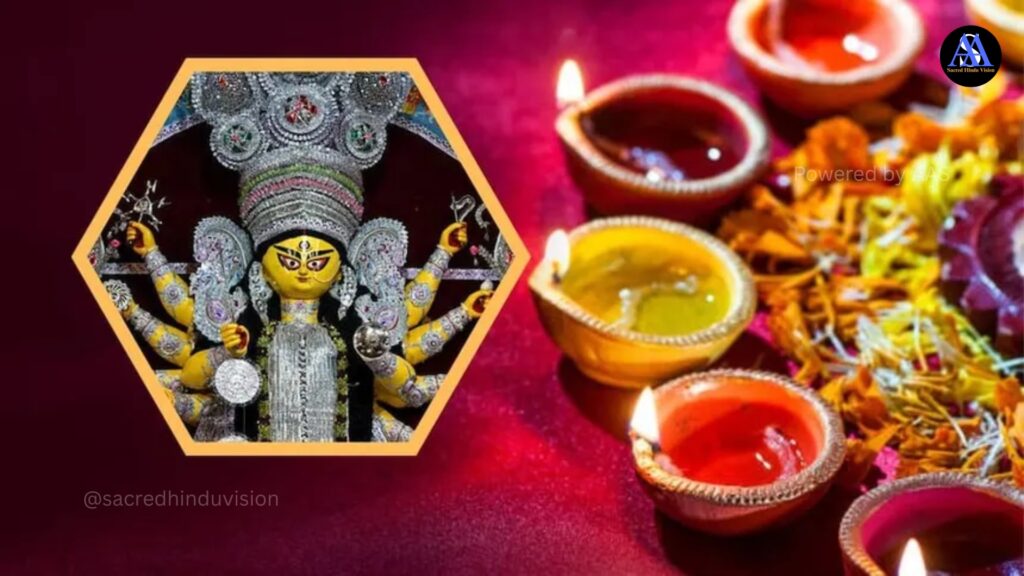
Conclusion
- Navratri is more than a festival – it’s a nine-day journey of faith, strength, and joy that unites millions across India and beyond. Rooted in the epic tales of Goddess Durga’s battle against Mahishasura and Lord Rama’s victory over Ravana, it celebrates the timeless triumph of good over evil. The nine days, each dedicated to a unique form of Durga, offer a chance to embrace strength, prosperity, and wisdom while aligning with the rhythms of nature and the cosmos.
From the lively Garba nights of Gujarat to the grand Durga Puja pandals of Bengal, the soulful Ramlila of the North, and the artistic Golu displays of the South, Navratri showcases India’s rich cultural diversity. Whether you’re fasting, dancing, or praying, these nine days inspire renewal, community, and devotion. So, light a Diya, wear vibrant colors, and let the spirit of Navratri fill your heart with positivity. For your website, enhance this content with colorful images of dances, idols, and rituals, and consider adding a downloadable Navratri guide or recipes to engage visitors.
आपत्सु मग्नः स्मरणं त्वदीयं करोमि दुर्गे करुणार्णवेशि।
नैतच्छठत्वं मम भावयेथाः क्षुधातृषार्ता जननीं स्मरन्ति॥१०॥
i.e.,
Whenever I am plunged in difficulties, O Durga, ocean of compassion, I remember you.
This feeling is genuine, not false, as in times of hunger and thirst, a child instinctively remembers the mother.
Navaratri is a spiritual journey celebrating the divine feminine, symbolizing the triumph of good over evil. It guides inner purification, mental positivity, and self-awareness. The festival inspires a deep connection with one’s true self, encouraging growth in wisdom, strength, and spiritual awakening, culminating in ultimate victory over ego and darkness.
If you liked this blog, please like, share it, and visit our website. Share your thoughts and suggestions in the comments section.
Thank you.
जय श्री राम।।
Please Share Through Various Platforms.
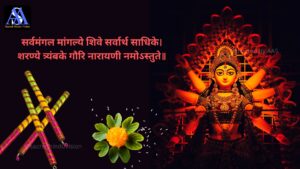
“Navaratri: A Pivotal Tour of Inner Power and Divine Triumph”
या देवी सर्वभूतेषु शक्ति-रूपेण संस्थिता।नमस्तस्यै नमस्तस्यै नमस्तस्यै नमो नमः॥ i.e., “Salutations again and again to the Divine Goddess who dwells in all beings in the form of power (Shakti).” Hello friends. Welcome to our Website. Today we will discuss a topic i.e., Navratri: A Vibrant Nine-Day Festival of Devotion, Dance, and Divine Power. Navratri, meaning “nine nights” in Sanskrit (“nava” for nine, “ratri” for nights), is one of India’s most colorful and spiritually significant Hindu
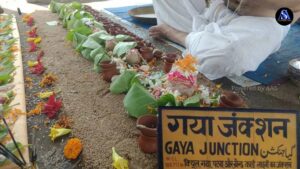
Mahalaya Amavasya: A Sacred and Spiritual Festival – 02
Mahalaya Amavasya is a sacred Hindu observance marking the end of Pitru Paksha—a period dedicated to honoring ancestors through rituals like shraddha and tarpan. Families across India pay homage to departed souls, seeking their blessings and peace. This day not only upholds the tradition of expressing gratitude to ancestors but also heralds the onset of Devi Paksha and Durga Puja celebrations. Mahalaya Amavasya stands as a beautiful blend of remembrance, spiritual reflection, and the renewal of hope, emphasizing the eternal bond between generations and the cyclical nature of life itself.
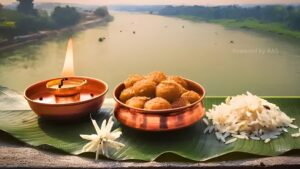
महालय अमावस्या: एक पावन और आध्यात्मिक पर्व
ॐ पितृभ्यो नमः।श्रद्धया पितॄन् स्मरामि विश्वपितॄन् च सर्वशः।तेषां पुण्यकृतां देवानां च पितॄणां च वयं नमामः। i.e., Om salutations to the ancestors.With reverence, I remember the ancestors, the universal forefathers who are virtuous gods.To them, the holy ones and the ancestors, we offer our salutations. नमस्कार दोस्तों! स्वागत है आपका हमारे चैनल पर। महालय अमावस्या का यह शुभ अवसर हमारे बीच एक बार फिर उपस्थित हुआ है। यह दिन हिन्दू पंचांग के अनुसार पितृ पक्ष का
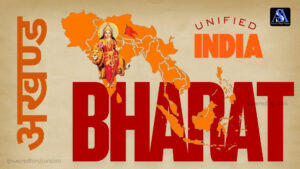
Hindutva: The Ultimate Political Empowerment of Culture – 02
नमस्ते सदा वत्सले मातृभूमे त्वया हिन्दुभूमे सुखं वर्धितोहम्।महामङ्गले पुण्यभूमे त्वदर्थे पतत्वेष कायो नमस्ते नमस्ते॥ i.e., O loving Motherland, I always salute you! On this Hindu land, I have grown up happily with your nurture and care. O most auspicious and sacred land, for your sake I offer this mortal body. I bow to you again and again.. Hello friends! Welcome to our Website. Today we will discuss a topic that has deeply influenced Indian politics:

हिंदुत्व: भारतीय सांस्कृतिक पहचान का राजनीतिक सशक्तिकरण
नमस्ते सदा वत्सले मातृभूमे त्वया हिन्दुभूमे सुखं वर्धितोहम्।महामङ्गले पुण्यभूमे त्वदर्थे पतत्वेष कायो नमस्ते नमस्ते॥ i.e., O loving Motherland, I always salute you! On this Hindu land, I have grown up happily with your nurture and care. O most auspicious and sacred land, for your sake I offer this mortal body. I bow to you again and again.. नमस्कार दोस्तों! स्वागत है आपका हमारे चैनल पर। आज हम एक ऐसे विषय पर चर्चा करेंगे जिसने भारतीय

History of Indonesia – During the Hindu-Buddhist Period
बुद्धं शरणं गच्छामि, धर्मं शरणं गच्छामि, संघं शरणं गच्छामि। i.e., I take refuge in the Buddha, I take refuge in the Dharma, I take refuge in the Sangha. Hello friends. Welcome to our website, where we share exciting stories of history with you. Today we will discuss a unique and important topic – the history of Indonesia during the Hindu-Buddhist period. This era was a significant turning point in the cultural and religious development of

“Navaratri: A Pivotal Tour of Inner Power and Divine Triumph”
या देवी सर्वभूतेषु शक्ति-रूपेण संस्थिता।नमस्तस्यै नमस्तस्यै नमस्तस्यै नमो नमः॥ i.e., “Salutations again and again to the Divine Goddess who dwells in all beings in the form of power (Shakti).” Hello friends. Welcome to our Website. Today we will discuss a topic i.e., Navratri: A Vibrant Nine-Day Festival of Devotion, Dance, and Divine Power. Navratri, meaning “nine nights” in Sanskrit (“nava” for nine, “ratri” for nights), is one of India’s most colorful and spiritually significant Hindu



